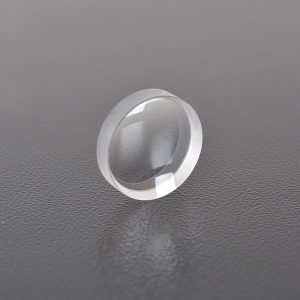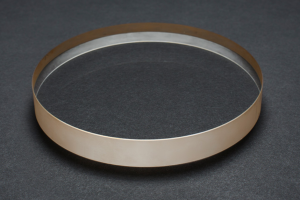
Coated Lens Factory: the Core Manufacturer of Optical Technology
From smartphone lenses to laser cutting equipment, coated lenses use nano-level thin film technology to improve optical efficiency. The uniformity and adhesion control of the film layer continue to break through the industry limits, becoming an indispensable precision heart in the fields of consumer electronics, medical instruments and high-end scientific research.
In modern optical technology, coated lenses play a vital role. Whether it is consumer electronics, medical equipment, or high-end scientific research instruments, coated lenses are indispensable components. As the manufacturer of these precision optical components, coated lens factories undertake the full process tasks from design, production to quality control. This article will deeply explore the working principle, technical difficulties and application of coated lens factories in various industries.
1. Basic concept of coated lenses
Coated lenses refer to optical components that deposit one or more layers of thin films on the surface of the lens by physical or chemical methods. These films are usually composed of metal oxides, fluorides or other materials. Their main function is to improve the optical performance of the lens, such as reducing reflection, enhancing transmission, filtering specific wavelengths, etc.
The core advantage of coated lenses is that they can significantly improve the efficiency of optical systems. For example, in camera lenses, coating can reduce the reflection loss of light, thereby improving the image quality; in laser equipment, coating can protect the lens from damage by high-energy lasers and extend its service life.
2. Production process of coated lens factory
The production of coated lenses is a highly sophisticated process, which usually includes the following key steps:
1. Lens design and processing
Lens design is the first step in production. According to customer needs, engineers will design lens shapes and sizes that meet specific optical performance. After the design is completed, the lens substrate (usually glass or plastic) will be precisely processed to ensure that its surface is smooth and meets the design requirements.
2. Cleaning and pretreatment
Before coating, the lens surface must be strictly cleaned and pretreated to remove any impurities or contaminants. This step is crucial because any tiny contaminants will affect the quality of the coating.
3. Coating process
The coating process is the core technology of the coating lens factory. Common coating methods include physical vapor deposition (PVD) and chemical vapor deposition (CVD). In the PVD process, materials are deposited on the lens surface by evaporation or sputtering in a vacuum environment; in the CVD process, chemical reactions produce thin films on the lens surface. The number of layers, thickness and material selection of the coating are adjusted according to the specific application of the lens.
4. Quality inspection
After the coating is completed, the lens will undergo strict quality inspection. Inspection items include film thickness, reflectivity, transmittance, wear resistance, etc. Only lenses that pass all inspections can enter the next stage.
5. Packaging and delivery
Finally, qualified lenses will be packaged to ensure that they are not damaged during transportation and finally delivered to customers.
3. Technical difficulties of coated lens factories
Although the production of coated lenses seems simple, it actually involves multiple technical difficulties:
1. Film uniformity
The uniformity of the coating directly affects the optical performance of the lens. How to achieve uniform film deposition on a complex lens surface is a major challenge in the coating process.
2. Adhesion of the film layer
The adhesion of the film layer to the lens substrate must be strong enough, otherwise the film layer may fall off during use, affecting the performance of the lens. Therefore, the interfacial bonding force between the film layer and the substrate needs to be strictly controlled in the coating process.
3. Environmental control
The coating process has extremely high requirements for the environment, especially the control of temperature and humidity. Any slight environmental change may cause coating failure.
4. Material selection
Different application scenarios require different coating materials. How to choose the right material and ensure that it does not change during the coating process is a key issue that the coating lens factory needs to solve.
IV. Application fields of coated lenses
Coated lenses are widely used in many fields. The following are several typical application scenarios:
1. Consumer electronics
In consumer electronics such as smartphones, cameras, projectors, etc., coated lenses are used to improve image quality, reduce glare and reflection.
2. Medical equipment
In medical equipment such as endoscopes, microscopes and laser therapy devices, coated lenses are used to enhance optical performance and ensure the accuracy and reliability of the equipment.
3. Scientific research instruments
In high-end scientific research instruments such as spectrometers, telescopes and lasers, coated lenses are used to filter specific wavelengths and improve light transmission efficiency.
4. Industrial manufacturing
In industrial manufacturing processes such as laser cutting, welding and 3D printing, coated lenses are used to protect equipment from damage by high-energy lasers and improve processing accuracy.
V. Future development trends
With the continuous advancement of optical technology, coated lens factories are also facing new challenges and opportunities. In the future, the development trend of coated lenses may include:
1. Nano-level coating technology
With the development of nanotechnology, the film thickness of coated lenses will be further reduced, even to the nanometer level. This will further improve the optical performance of the lens.
2. Multifunctional coating
Future coated lenses may have multiple functions, such as anti-reflection, anti-fouling, anti-scratch, etc. This will greatly expand the application range of coated lenses.
3. Intelligent production
With the development of artificial intelligence and automation technology, the production process of coated lens factories will be more intelligent, and production efficiency and quality will be further improved.
Conclusion
As the core manufacturer of optical technology, the coated lens factory plays an indispensable role in the development of modern science and technology. Through continuous technological innovation and process optimization, the coated lens factory will continue to promote the advancement of optical technology and provide more efficient and precise optical solutions for all walks of life.
Hanzhong Brisun Optics Co., Ltd. Is the high precision optical element manufacturer provides customized production of Various optical lenses, including spherical lens, cylindrical lens, optical window, mirror, prism, filter, metal base mirror and other high-precision optical elements. The base materials include various optical glass, fused quartz, calcium fluoride (CaF2), zinc selenide (ZnSe), germanium (GE), silicon (SI), sapphire, metal and other materials. And provide antireflective film, high reflection film, spectroscopic film, metal film and other optical coatings.
Welcome to OEM and Purchasing!


